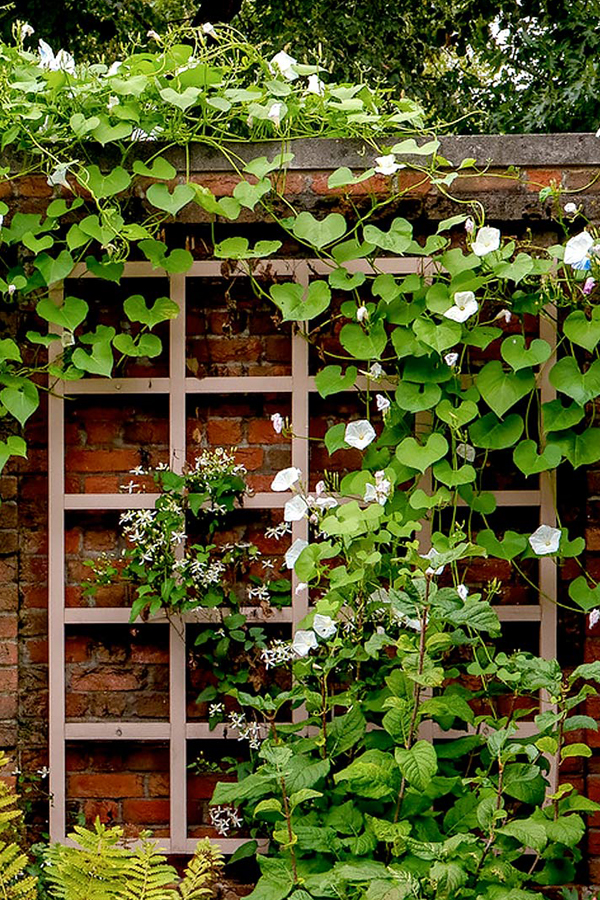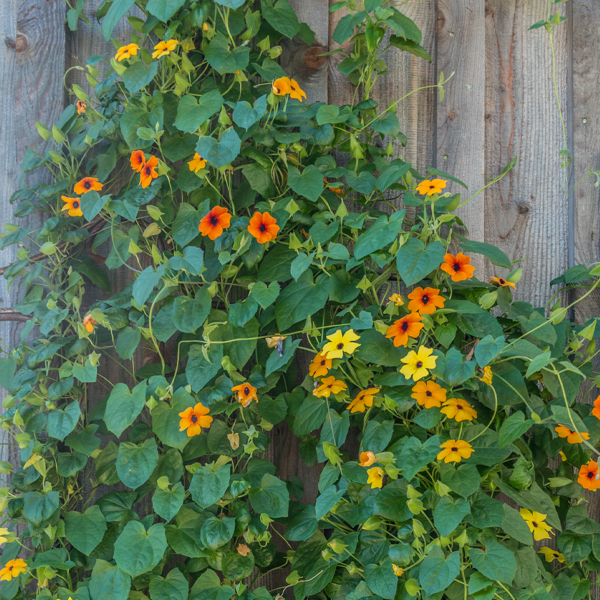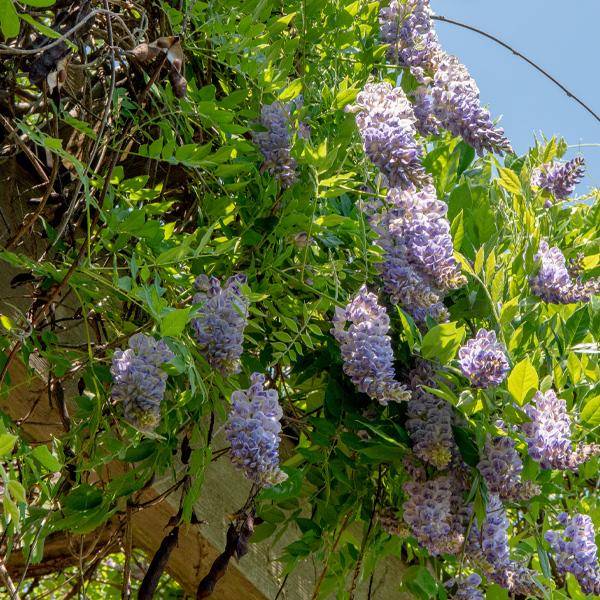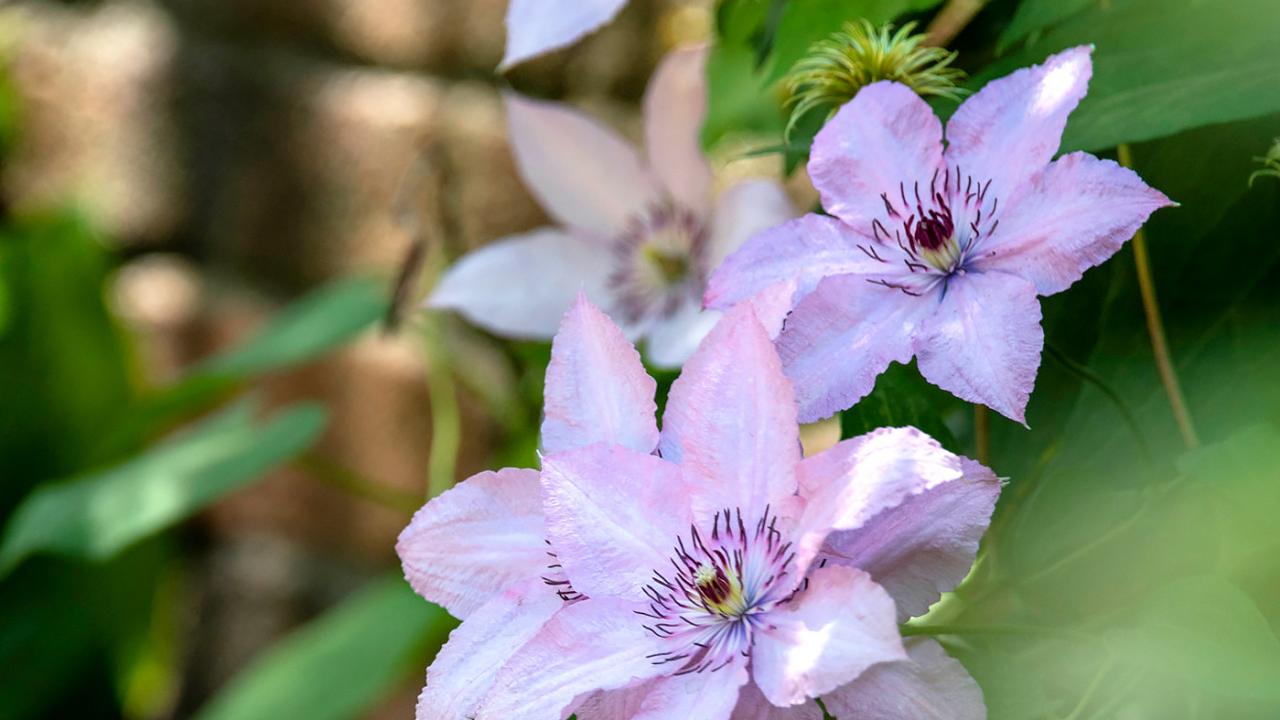

Up, Up and Away
The Versatility of Vines
There’s often a dilemma facing gardeners who work in small tight spaces. In urban areas, like Chicago, you may have a back yard that’s only 25 by 40 feet. There may be a very narrow planting bed between the sidewalk or fence or along the house or garage wall. How can you make your garden stand out? Grow up! Use structures—trellises, arbors, pergolas, tuteurs, or obelisks—that all add height. The icing on the cake—a flowering vine on the support.
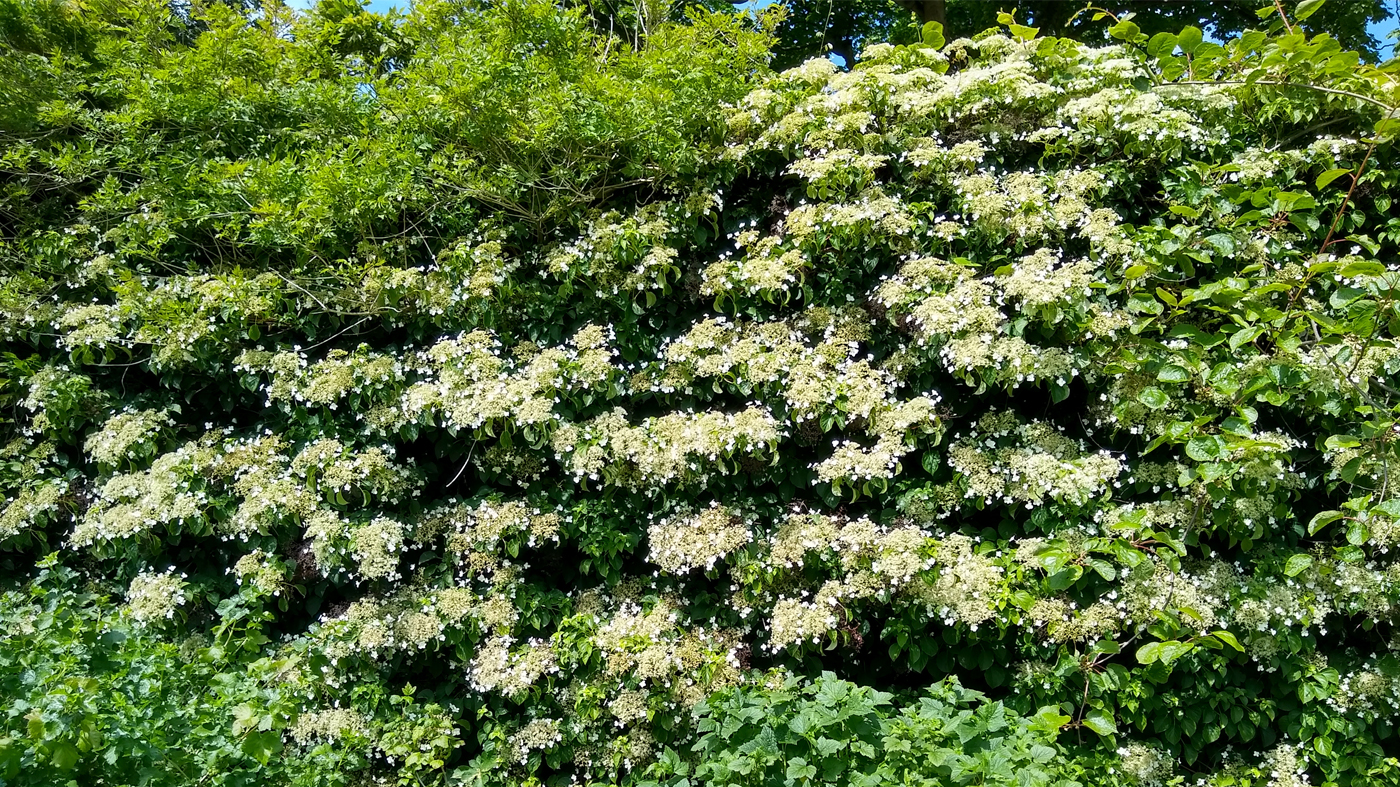
Climbing Hydrangea
Twining and Clasping
Vines grow by twining—curling their stems around a trellis wire or wood slat, by tendrils (modified stems or leaves), or by rootlets along the stem that attach themselves to the support. Some, like those of climbing hydrangea have adhesive discs, called holdfasts, on the roots that stick to the support. You can avoid damage to brick and wood siding by keeping rootlet-type vines off the walls.
Obelisks and tuteurs are handy for growing small vines like black-eyed Susan vine and cardinal climber, both annuals. Obelisks are typically four-sided, tall and rounded at the top. Tuteurs are usually three-sided and wider at the base than at the top. Either type can be used in the ground or in a container.
Make a teepee by placing 5 or 6 bamboo stakes about 8 inches into the soil and tying them at the top with twine. This inexpensive support usually lasts for about three growing seasons. It’s a good choice for annual vines like sweet peas, hyacinth beans or tiny decorative pumpkins and gourds. Some vines like clematis can be used as a ground cover, meandering around perennials or shrubs, over boulders, or creeping up a small ornamental tree.

Clematis
Soil and Fertilization
Like most other garden plants, annual and perennial vines like medium-moist, well-drained loamy soil. If your planting spot is mostly clay, amend it first with compost so the roots can easily travel through the soil to absorb nutrients and water. Keep flowering vines going by feeding them a few times a month throughout the summer with a water-soluble fertilizer.
Some perennial vines, like clematis, like their roots growing in the shade while the twining tops reach for the sun. Any sun-loving vine planted in partial shade will grow but produce fewer flowers. There are plenty of choices. Let’s get growing.
Nina Koziol is a garden writer and horticulturist who lives and gardens in Palos Park, Illinois.


